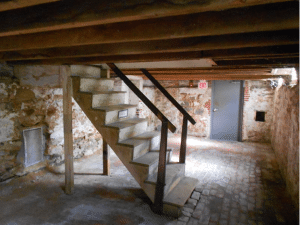Your basement has more potential than you think. Extra Bedrooms, a quiet office, a movie room that actually feels like a theater—yes, that’s all hiding downstairs. And for homeowners in Salt Lake County, Davis County, and Utah County, Finishing that space isn’t just about comfort. It’s about smart value. You know what? When a project is done right, it pays you back in livability, resale power, and daily joy. That’s why hiring a dedicated basement finishing company—not a general handyman, not “we’ll figure it out” DIY—is the move that makes sense.
Contents
- 1 Why hire a basement finishing company instead of going DIY?
- 2 Real value: the numbers and the feel
- 3 Moisture, insulation, and comfort—done right the first time
- 4 Design that fits your life (and your lot)
- 5 Permits, codes, and inspections without the headache
- 6 Timelines, budgets, and what to expect
- 7 Materials that stand up to Utah life
- 8 Signs you’re ready to finish your basement
- 9 Why Utah Basement Finishing?
- 10 Quick FAQ
- 11 Ready when you are
Why hire a basement finishing company instead of going DIY?
Short answer: speed, safety, and results. Long answer: basements in Utah come with a few quirks you can’t ignore. Let me explain.
Along the Wasatch Front, foundations move a bit through the seasons. That’s why Utah uses floating walls in basements. If you’ve ever seen a wall framed an inch above the slab with special anchors—yep, that’s it. Those details matter more than they look. Get them wrong and doors stick, drywall cracks, and floors squeak. Get them right and your lower level feels solid for years.
Then there’s code. Bedroom? You’ll need an egress window. Bath? Plan for proper ventilation and GFCI protection. Family room under the kitchen? You’ll want sound control, trust me. A professional team knows exactly how local inspectors in Draper, South Jordan, Lehi, Layton, Bountiful—you name it—like things done. It saves time. It saves money.
| Approach | What You Get | Typical Trade-Offs |
|---|---|---|
| DIY | Lower upfront Cost; full control | Slow timeline, permit stress, limited warranty, hidden mistakes |
| Handyman | One person for many tasks | Gaps in specialty skills; code issues; project drag |
| Professional Company | Design, permits, trades, schedule, warranty | Higher upfront cost; better long-term value |
Here’s the thing: a basement remodel has a lot of moving parts—framing, plumbing, electrical, HVAC, finishes. A coordinated crew keeps things in sync so you don’t lose weeks waiting for the right saw blade or the one electrician who can show up on a Tuesday.
Real value: the numbers and the feel
Return on investment is only one part of the story. Across the region, finished basements often recoup a big share of the cost when you sell. Many agents in Utah County and Salt Lake County will tell you buyers scan listings for “finished lower level,” then compare square footage like hawks. You finish. Your home stands out. Simple as that.
But the real win is daily life. A basement family room stops your living room from becoming a toy storage zone. A guest suite makes holiday visits easy. And if you’re considering a legal accessory space down the road, a strong start with proper egress, sound separation, and mechanical planning puts you in a better spot with your city’s ADU rules.
Plus, along our winters with early sunsets, a warm, bright space downstairs changes the mood of the whole home. Honestly, that matters.
Moisture, insulation, and comfort—done right the first time
Utah is dry, but basements still see water. Snowmelt, spring runoff, irrigation mishaps—pick your season. A reputable finishing team starts with a moisture check. We look for hairline cracks, seepage marks, and poor grading outside. If needed, we suggest basement waterproofing steps like interior drains, sump pumps, or exterior fixes before we frame a single stud.
Comfort is a system. That means smart insulation, air sealing, and ventilation. A mix we often use: rigid foam against concrete for thermal break, then insulated studs for R-value and wiring. It keeps walls warm, which keeps rooms comfortable. We also plan for balanced HVAC—more than just a supply vent. Good return air, possible zoning, and quiet duct routes make a huge difference in winter.
And yes, radon. Much of Utah sits in zones where radon testing is wise. We can arrange a test, add passive or active radon mitigation if needed, and build with that system in mind. Better safe than sorry.
Design that fits your life (and your lot)
Every basement is a puzzle: posts, beams, duct runs, Windows, and stair placement. A great design doesn’t pretend they’re not there—it works with them. The result feels natural, not “oh, they jammed a bathroom under the Stairs and called it good.”
We look at daylight. In places like Holladay or Bountiful, some homes have walk-out or daylight basements. That’s a gift. We chase that light across rooms with glass doors, lighter finishes, and well-placed mirrors. No walk-out? An added egress window with a clean well still pours in surprising brightness.
Room ideas that consistently work for Utah families:
- Media + game room combo with dimmable cans, a single switch to “movie mode,” and prewire for surround.
- Guest suite with a quiet bath, sturdy fan, and a closet that meets bedroom code.
- Home gym with rubber flooring, extra outlets, and a fan that actually clears the air.
- Office with sound-dampened walls and smart task lighting—no more video calls from the kitchen table.
- Wet bar or mini-kitchen with a simple drain, GFCI outlets, and splash-proof finishes.
Storage is the unsung hero. We’ll tuck it under stairs, carve out a gear closet for skis and camping bins, and keep mechanicals clear and serviceable. That last part matters for appraisals and code.
Permits, codes, and inspections without the headache
Permits exist to protect you. They also keep your project legal for resale and insurance. We handle the paperwork with your city—whether it’s Sandy, South Jordan, Kaysville, or Provo—and coordinate inspections during each phase.
Common code checkpoints we handle daily:
- Egress for sleeping spaces with the proper sill height and ladder in the well if needed.
- Electrical safety with AFCI breakers, GFCI near wet zones, and labeled circuits.
- Fire blocking around soffits and penetrations, often overlooked in DIY builds.
- Combustion air and clearance for furnaces and water heaters—keep them breathing.
- Ceiling height and stairs that meet rise/run rules and headroom limits.
We also coordinate with your utility providers and schedule drywall and final inspections with a clean set of plans on hand. No surprises, just steady progress.
Timelines, budgets, and what to expect
Every home is different, but a standard finish—from design to final punch list—often runs 8 to 12 weeks. Larger builds or complex Bathrooms can take longer. We’ll spell out a timeline so you know what’s happening each week.
Here’s our typical flow:
- Consult and measure We listen, measure, and talk through wish lists and must-haves.
- Design + Estimate You get a clear plan and a line-by-line proposal with allowances for tile, flooring, and fixtures.
- Permits + scheduling We pull permits, set trades, and order materials early to avoid delays.
- Build phase Framing, rough-ins, insulation, drywall, trim, paint, flooring, fixtures—cleaned daily.
- Final walk We test doors, outlets, fans, and review your warranty.
We’re transparent about change orders. If you pivot from carpet to luxury vinyl plank halfway through, we’ll show you the cost difference and timing before anything shifts.
Materials that stand up to Utah life
Durable finishes make basements easier to live in. We tend to recommend:
- LVP flooring for family spaces—quiet, warm underfoot with the right underlayment, and handles spills.
- Mold-resistant drywall and cement board for showers. We often use Schluter-KERDI systems for watertight baths.
- Solid-core doors to cut noise between levels.
- Low-VOC paints like Sherwin-Williams SuperPaint or Emerald for a clean finish.
- Acoustic upgrades in key areas—staggered studs or sound-dampening mats under theaters and offices.
For insulation, combining rigid foam against concrete and batt in the stud cavity keeps humidity off the cold wall. It’s a simple move that pays off all winter. And yes, we’ll talk about where carpet still makes sense—bedrooms and media rooms often benefit from the warmth and sound absorption.
Signs you’re ready to finish your basement
- Your upstairs feels crowded Toys creep into every room; teens need a place to hang out.
- Guests come often and you want a real suite, not an air mattress by the furnace.
- You work from home and crave a quiet office that actually looks good on camera.
- The space is already halfway there You’ve got decent ceiling height, a solid slab, and rough plumbing nearby.
- You want a stronger resale story Added living space in Salt Lake County, Davis County, or Utah County always helps your listing.
If a few of these hit home, you’re closer than you think.
Why Utah Basement Finishing?
We’re local. We build basements across the Wasatch Front year-round, which means we understand our soils, our inspectors, and our weather. From floating walls to snow-day scheduling, we’ve seen it all.
What you can expect from Utah Basement Finishing:
- Design-build clarity One team to plan, permit, and build—clean handoffs, faster progress.
- Code confidence Egress details, fire blocking, radon plans, and clean inspections.
- Quality materials Owens Corning insulation, Schluter shower systems, reliable fixtures.
- Respect for your home Dust control, daily cleanups, clear communication.
- Solid warranty We stand behind our work, and we’re easy to reach if you ever need us.
And because we live here, we build like we’ll run into you at the farmer’s market or on the Bonneville Shoreline Trail. That means quality over shortcuts.
Quick FAQ
How long does a typical basement finish take?
Most projects fall in the 8–12 week range once we start construction. Design, selections, and permitting happen before that so the build phase runs smoothly.
Do I need an egress window for a bedroom?
Yes. Every sleeping space needs a compliant egress window with specific size and sill height. We handle the engineering, cut, well, drain, and finish.
Can you work through the winter?
Absolutely. Winter is a great time for interior work. We’ll protect pathways, manage dust, and keep the schedule moving even when the snow flies.
What’s the budget range?
Costs vary by size, finishes, and bath count, but we’ll build a clear proposal with allowances so you can control the final number. No mystery math.
Will finishing help with resale?
In our market, finished basements often stand out in listings and can boost buyer interest. Appraisers also recognize professionally finished space with permits and inspections.
Ready when you are
If you’re thinking about a smarter, warmer, more useful lower level, we’d love to help. Call 801-515-3473 or request a visit, and we’ll show you what’s possible.
Want to start planning with a real number, not a guess? Call 801-515-3473 or click Request a Free Quote and let’s map out a basement you’ll actually use.




